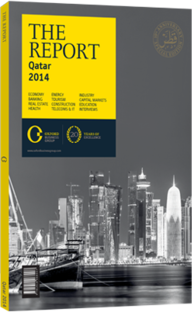Enticing incentives: The Qatar Financial Centre offers several perks for investors
The Qatar Financial Centre (QFC) was established in 2005 in order to attract international financial institutions and multinational corporations to establish businesses in international banking, financial services, insurance, corporate head office functions and related services. The QFC has two authorities, the QFC Authority (QFCA) and the QFC Regulatory Authority (QFCRA), which are independent of each other.
The QFCA issues licences to businesses that wish to incorporate new limited liability companies (LLCs) and other legal entities, or registering branches of foreign entities in the QFC. QFCRA is the independent regulator for firms authorised to conduct financial services activities in the QFC, primarily financial, insurance, brokerage and fund management services. The QFC has its own civil and commercial court, and an independent regulatory tribunal. The QFC’s legal infrastructure is modelled closely on that of the UK’s. Entities operating in QFC can access the local market, be 100% foreign-owned, have no restrictions on the currency they trade in and can repatriate 100% of their profit.
Taxation
The QFC operates its own tax laws which are separate from, and run parallel to, the tax laws of the state of Qatar. QFC entities are subject to corporation tax on their local source profits at a rate of 10%. “Local source profits” are defined as profits that arise in, or are derived from, Qatar. QFC entities are required to self-assess their tax liability and file a tax return, together with accounts and supporting computations, within six months of the end of the accounting period. Tax is payable six months and one day after the end of the accounting period. Payments made by QFC entities are not subject to withholding tax. Provisions are in place for QFC entities providing Islamic financial services or entering into Islamic finance transactions to ensure that the tax treatment is comparable to that afforded to non-sharia compliant institutions and conventional transactions. The government, local authorities, statutory bodies and any QFC entity wholly owned by the government or these authorities or bodies, are exempt from taxation in the QFC. An election for special exempt status is available for certain vehicles including registered funds and charities. The QFC maintains its own transfer pricing (TP) regulations specifying that where transactions between associated persons are not on an arm’s length basis and this results in a reduction in the amount of the chargeable profits (increase of losses) of one of those associated persons, the QFC tax authority has the power to recalculate the taxable profits of that entity as if the arm’s length basis had been used for the transaction.
The QFC has issued a TP Manual providing guidance to QFC taxpayers on the application of the TP rules. The QFC regime has an advance ruling scheme that can be used for advance pricing agreements.
More recently, QFC has also turned its attention to attracting the corporate head office, family office and the alternative investment market focusing on areas such as holding companies, intellectual property companies, treasury companies, captive insurance and risk management companies, single family offices, hedge funds, and other alternative investment vehicles.
Special Provisions
In this regard, the QFC tax regulations include provisions that are beneficial to many of these types of companies. One example is the “group relief” article, which permits the offset of a loss made by one company in a group against the profit of another company provided the surrendering and claimant companies are both members of the same group and are both QFC entities. Another example of this is the exemption on gains and losses on intra-group transfers of assets which is available provided both companies are QFC entities and are members of the same group for 12 months after the transfer occurs.
The QFC tax regulations also provide a special exempt status for certain registered funds, special investment funds, special funding companies, alternative risk vehicles and charities. Further to this, there is also a zero concessionary tax rate for the chargeable profits of reinsurance businesses and captive insurance companies.
You have reached the limit of premium articles you can view for free.
Choose from the options below to purchase print or digital editions of our Reports. You can also purchase a website subscription giving you unlimited access to all of our Reports online for 12 months.
If you have already purchased this Report or have a website subscription, please login to continue.

